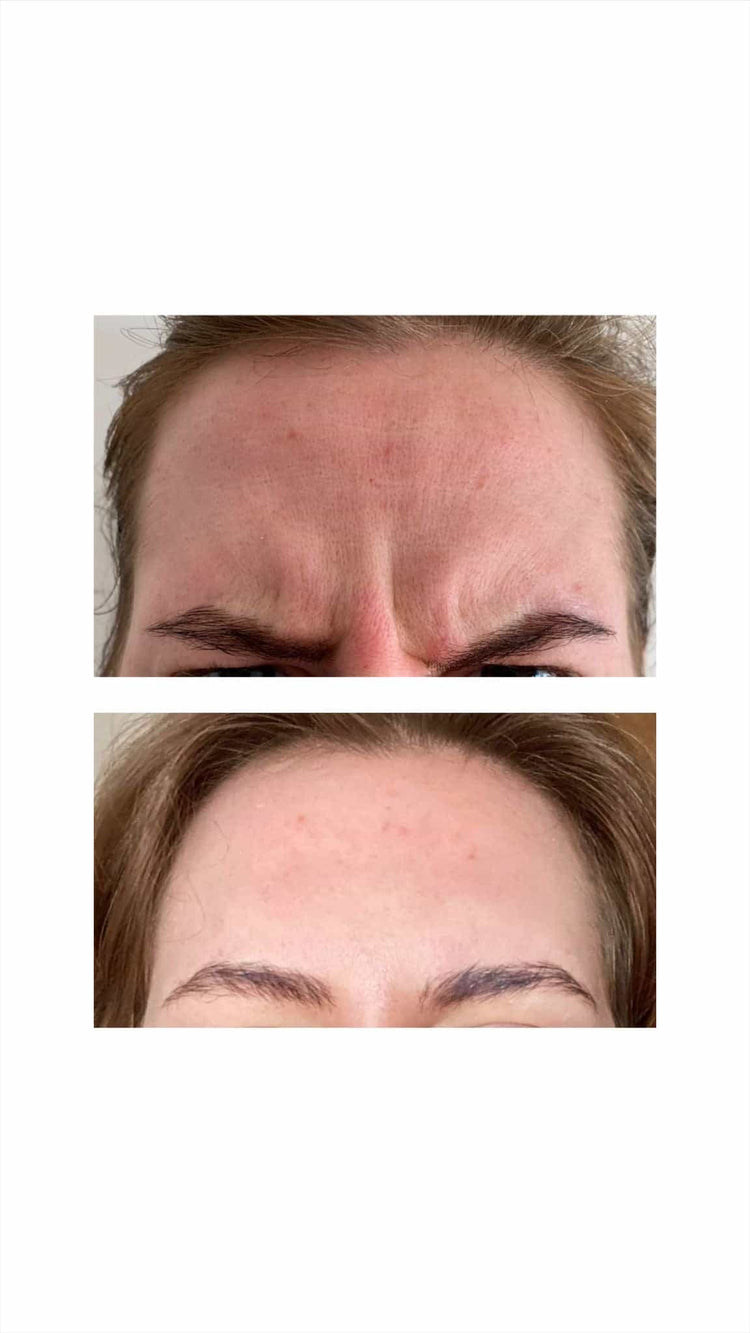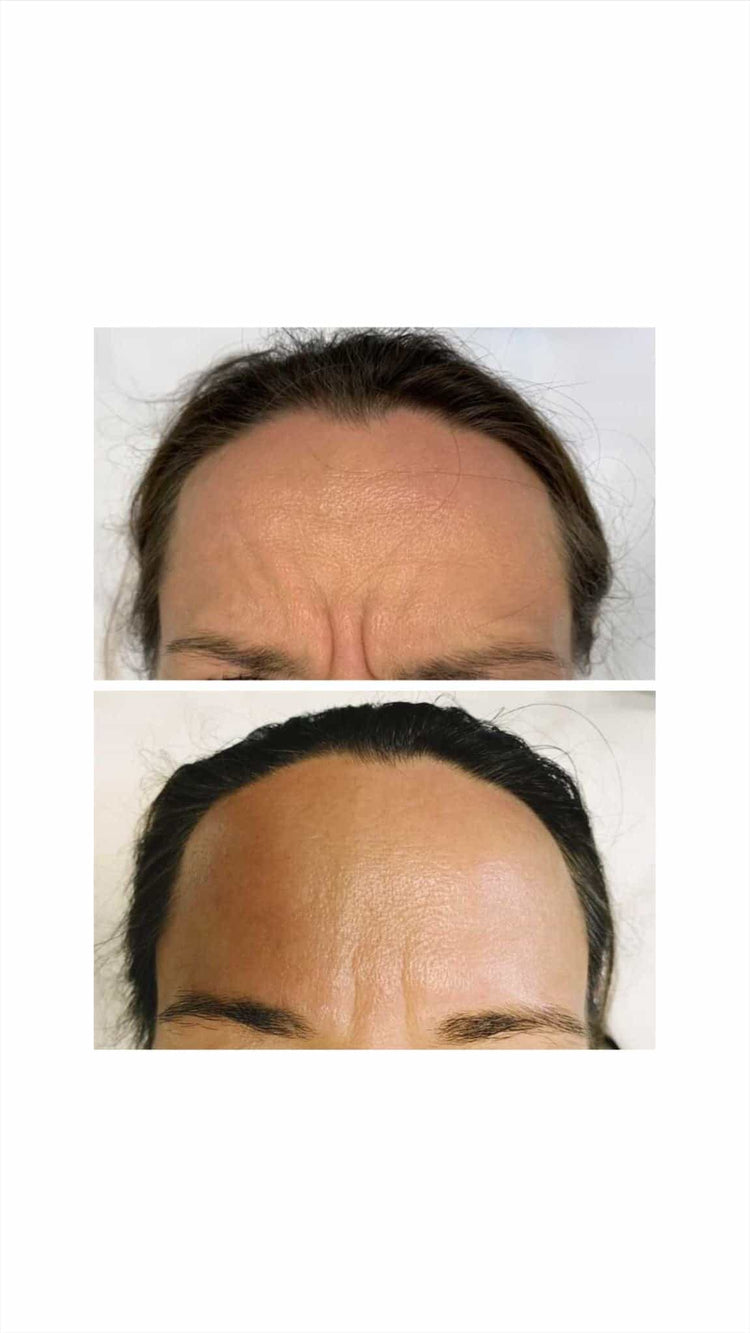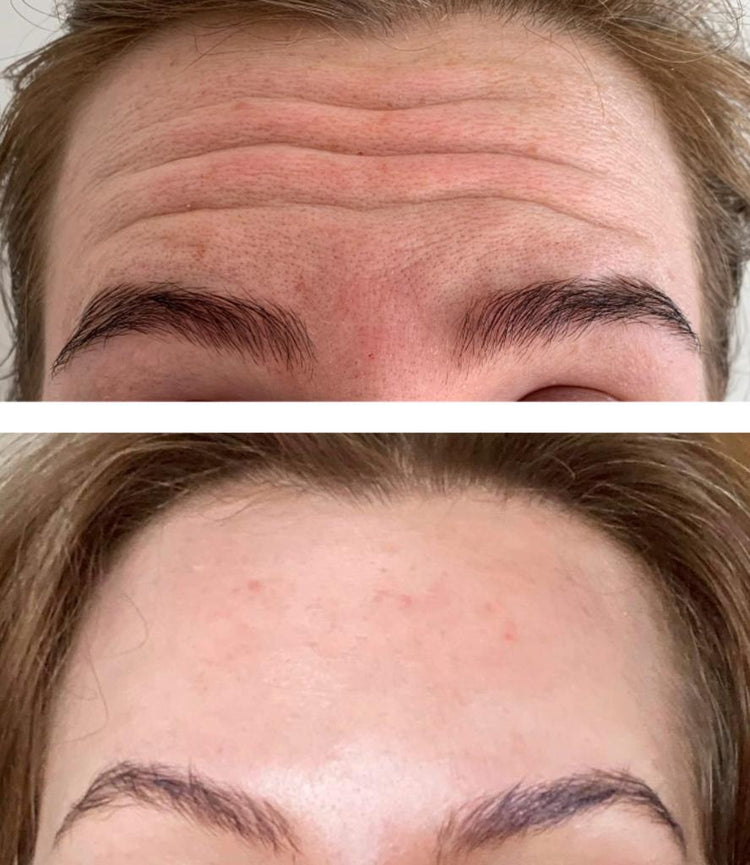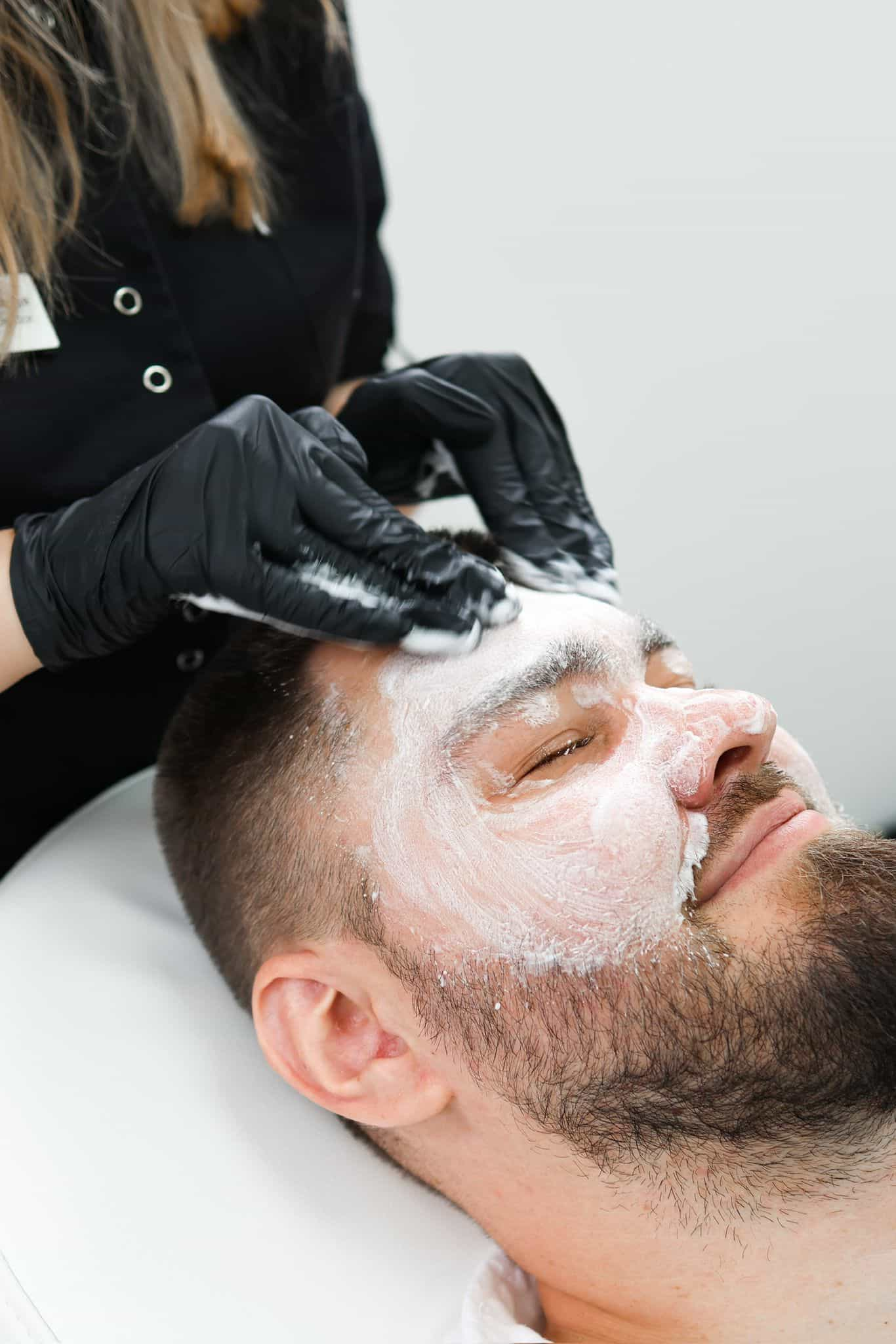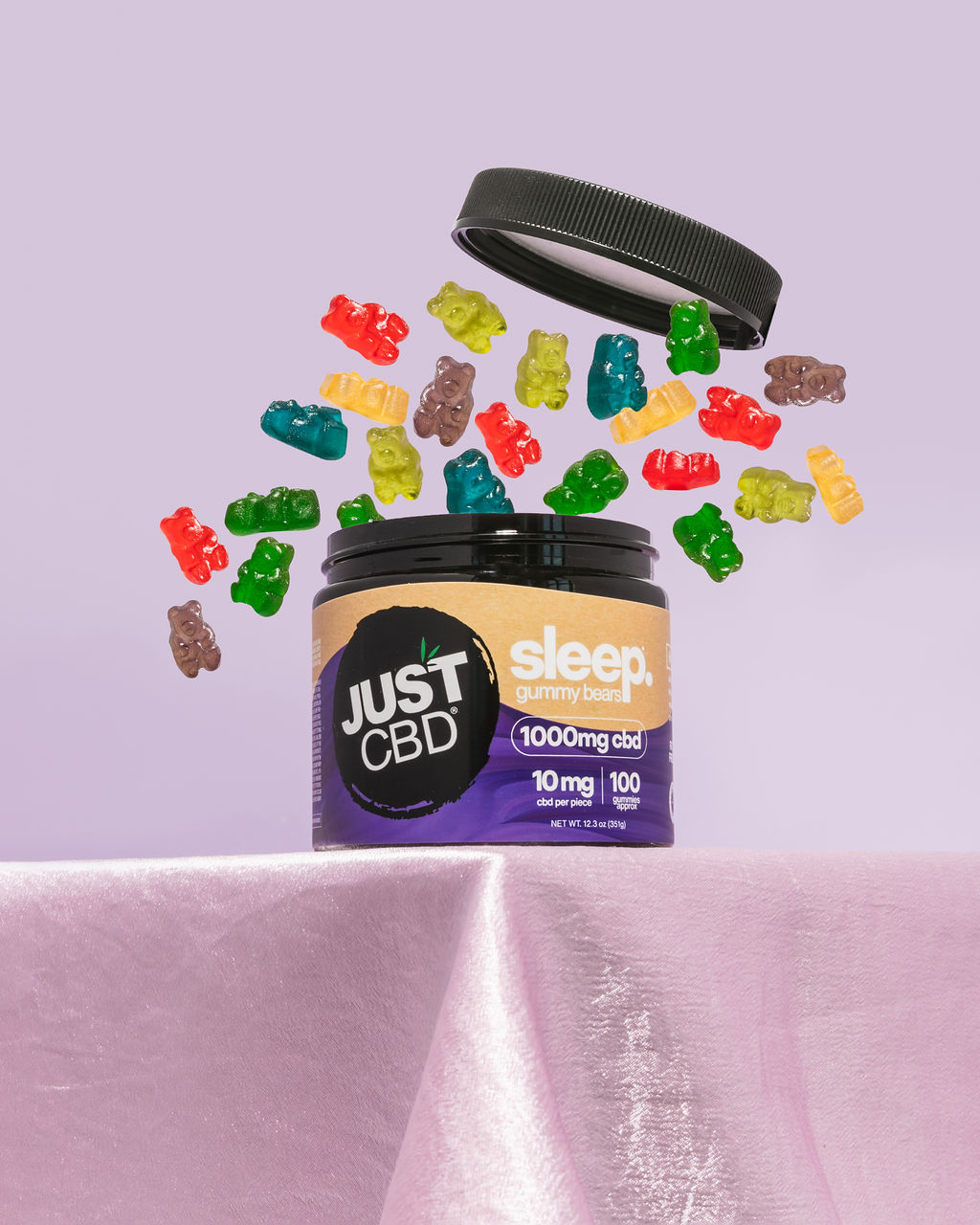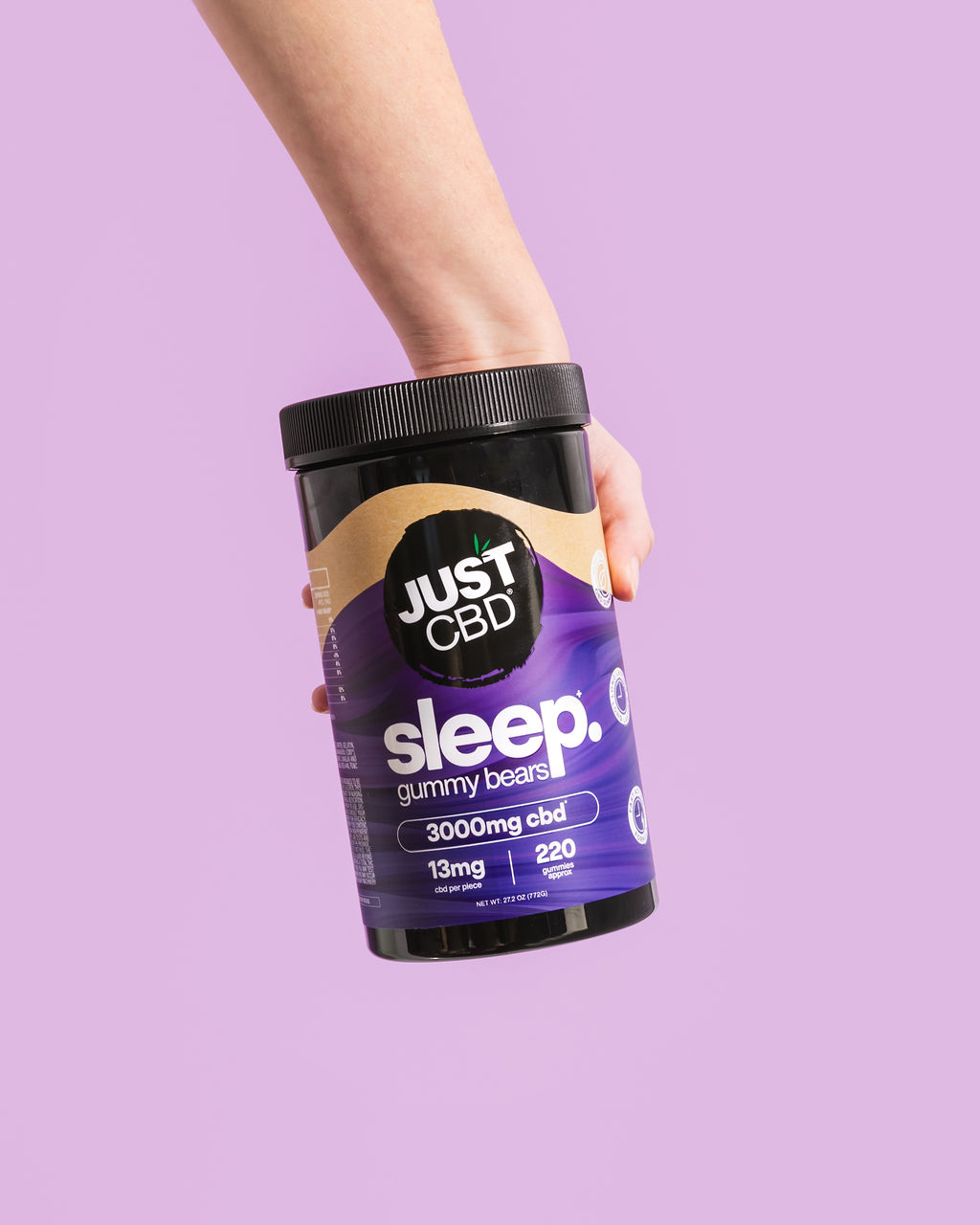Jun 7, 2025
Retinol Peel Near Dockenfield, Surrey
Learn About the Types of Dermal Fillers at It’s Me and You Clinic
Understanding Retinol Peels near Dockenfield, Surrey
The concept of retinol peels has gained popularity in recent years due to its impressive ability to improve the overall appearance of the skin. A retinol peel near Dockenfield, Surrey, is a type of chemical peel that utilizes retinol, a derivative of vitamin A, to promote cell turnover and rejuvenate the skin.
The science behind retinol peels lies in its unique ability to penetrate deep into the skin, targeting the underlying layers where collagen and elastin production occur. These proteins are essential for maintaining healthy, plump, and firm skin, but their production tends to decline with age, leading to fine lines, wrinkles, and age spots.
Retinol works by binding to specific receptors in the skin, stimulating cellular activity that ultimately leads to an increase in collagen and elastin synthesis. This process is known as cell differentiation, where retinol encourages the transformation of existing skin cells into new, healthier ones.
The resulting effect is a more even-toned complexion, reduced appearance of fine lines and wrinkles, and improved skin texture. Additionally, retinol peels have been shown to inhibit the growth of abnormal skin cells, which can contribute to conditions such as acne, hyperpigmentation, and solar keratoses.
Retinol peels near Dockenfield, Surrey, typically involve the application of a solution containing retinol to the skin, followed by gentle exfoliation and moisturization. The solution works its magic over a period of several weeks, gradually revealing smoother, brighter, and more resilient-looking skin.
It is essential to note that not all retinol peels are created equal, and the effectiveness of the treatment depends on various factors such as the concentration of retinol, the duration of the peel, and individual skin type. In general, high concentrations of retinol (typically between 0.25% and 1%) tend to produce more pronounced results.
Before undergoing a retinol peel near Dockenfield, Surrey, it is crucial to consult with a qualified professional who has experience in administering this treatment. They will assess your skin type, discuss your concerns, and recommend the most suitable retinol peel program tailored to your needs.
During the peel process, you can expect some temporary side effects such as redness, sensitivity, and dryness. However, these symptoms are usually mild and short-lived, resolving on their own within a few days. To minimize discomfort and promote optimal results, it is essential to follow post-peel instructions carefully.
Regular retinol peels near Dockenfield, Surrey, can lead to long-term benefits such as reduced fine lines, improved skin texture, and enhanced collagen production. By maintaining a consistent skincare routine and using products containing retinol, you can enjoy smoother, brighter, and healthier-looking skin for years to come.
It is also worth noting that retinol peels are not suitable for all skin types and concerns. For example, sensitive skin or rosacea-prone individuals may require modified treatments or alternative skincare options. A qualified professional will be able to guide you in determining the best approach for your specific needs.
In summary, retinol peels near Dockenfield, Surrey, offer a powerful solution for achieving healthy, radiant-looking skin. By understanding the science behind this treatment and working with a qualified professional, you can unlock the full potential of retinol peels and enjoy transformative results that last.
The use of retinol peels has gained popularity in recent years as a non-surgical solution for addressing various skin concerns.
Retinol, a derivative of vitamin A, has been used for decades to promote skin health and address various concerns such as fine lines, wrinkles, and hyperpigmentation.
Retinoids have been shown to be effective in stimulating collagen production, which can lead to improved skin texture and reduced appearance of fine lines and wrinkles.
Increased cell turnover is another benefit of retinol, allowing for a more efficient removal of dead skin cells and revealing brighter, smoother skin.
Enhanced skin elasticity is also achieved through the use of retinol peels, which can help to improve skin’s ability to snap back into place after stretching.
A study published by the University of Manchester suggests that retinoids can stimulate collagen production, increase cell turnover, and enhance skin elasticity, making them a valuable treatment option for various skin concerns.
Retinol peels work by penetrating deep into the skin to stimulate cellular renewal and collagen production, leading to improved skin texture and tone.
The effects of retinol peels can be seen after just one treatment, with noticeable improvements in skin appearance and function continuing for several weeks or even months after treatment.
Regular use of retinol peels can lead to long-term benefits, including reduced fine lines and wrinkles, improved skin elasticity, and a more even-toned complexion.
A skilled practitioner will assess the individual’s skin type and concerns before determining the best course of treatment, which may involve a series of peel treatments spaced several weeks apart.
During a retinol peel treatment, the skin is exposed to a solution containing alpha-hydroxy acids (AHAs) or beta-hydroxy acids (BHAs), which work together to exfoliate the skin and stimulate collagen production.
The AHAs in the solution help to break down dead skin cells, while the BHAs penetrate deeper into the skin to target pores and reduce inflammation.
After the treatment, the skin may appear red or pink due to increased blood flow, but this effect typically subsides within a few hours.
Following a retinol peel treatment, it’s essential to follow a proper after-care routine to ensure optimal results and minimize any potential side effects.
This may involve using gentle skincare products, avoiding direct sun exposure, and following a specific moisturizing regimen to hydrate the skin and promote collagen production.
A retinol peel is a type of chemical peel that uses retinol, a derivative of vitamin A, to treat various skin concerns near Dockenfield, Surrey. The peel works by increasing cell turnover, reducing the appearance of fine lines and wrinkles, and improving skin texture.
Retinol peels are available in different strengths, ranging from light to deep, depending on individual skin types and needs. A light retinol peel is suitable for most skin types, while a deeper peel may be necessary for more severe concerns such as acne scarring or hyperpigmentation near Dockenfield, Surrey.
Benefits of retinol peels include:
-
Improved skin texture and tone
-
Reduced appearance of fine lines and wrinkles
-
Minimized pores
-
Enhanced skin brightness and radiance
-
Improved skin tone and evening out of complexion
-
Reduced appearance of acne scarring and hyperpigmentation near Dockenfield, Surrey.
Retinol peels can be performed in a clinical setting or at home using over-the-counter products. Home treatments are generally less intense than professional peels but can still produce noticeable results. Professional retinol peels, on the other hand, offer more dramatic and longer-lasting results.
Some common skin concerns treated with retinol peels near Dockenfield, Surrey include:
-
Acne scarring
-
Hyperpigmentation
-
Fine lines and wrinkles
-
Dull skin texture
-
Pore minimization
-
Uneven skin tone
To ensure a safe and effective retinol peel treatment, it’s essential to choose a qualified practitioner or dermatologist near Dockenfield, Surrey. During the consultation, your skin type, concerns, and medical history will be assessed to determine the most suitable treatment plan.
Before undergoing a retinol peel, you can expect:
-
A thorough consultation with your practitioner to discuss your skin concerns and expectations
-
A patch test to check for any sensitivity or allergic reactions to the treatment
-
Pre-peel preparation, which may include avoiding certain skincare products and makeup near Dockenfield, Surrey.
-
The actual peel treatment, which can take anywhere from a few minutes to several hours, depending on the strength of the peel
-
A post-peel aftercare routine, which may include using soothing products and avoiding further treatments until your skin is fully healed.
After the treatment, you can expect:
-
Immediate results, including a smooth and brighter complexion near Dockenfield, Surrey
-
A peeling effect that may last for several days to a week or more, depending on individual skin types and concerns.
-
A gradual improvement in skin texture and tone over time with continued use of retinol products near Dockenfield, Surrey
-
Maintenance treatments every few months to maintain optimal results
A comprehensive retinol peel treatment typically involves a series of sessions, with each session becoming progressively stronger to achieve optimal results.
The British Association of Dermatologists recommends starting with lower concentrations (around 0.25%) and gradually increasing as the skin becomes more tolerant.
Retinol peels are a popular non-invasive treatment for various skin concerns such as fine lines, wrinkles, age spots, acne scars, and hyperpigmentation.
The process of a retinol peel typically begins with a consultation with a healthcare professional or dermatologist to determine the best course of treatment.
During the consultation, the individual’s skin type, concerns, and medical history are assessed to create a personalized treatment plan.
A typical retinol peel treatment involves applying a solution containing retinol to the skin, which stimulates collagen production, cell turnover, and improves skin texture.
The strength of the solution can vary depending on the individual’s skin type and concerns, but generally starts with a lower concentration (around 0.25%) and increases in subsequent sessions.
Some common types of retinol peels include:
- Light chemical peel: This is the mildest form of retinol peel and is suitable for most skin types, helping to improve skin texture and reduce fine lines and wrinkles.
- Medium chemical peel: This type of peel is more potent than a light peel and is used to address more severe concerns such as acne scars and hyperpigmentation.
- Deep chemical peel: This is the strongest form of retinol peel and is typically reserved for more severe skin concerns such as deep wrinkles, scars, and birthmarks.
The duration of a retinol peel treatment can vary depending on the individual’s skin type and concerns, but generally lasts between 30 minutes to several hours.
After the treatment, the skin may appear red, swollen, or peeling, which is normal and temporary.
The effects of a retinol peel are cumulative, meaning that optimal results are achieved after multiple sessions.
A typical retinol peel treatment regimen can include:
- Initial consultation to assess skin type and concerns
- Series of retinol peels spaced 4-6 weeks apart
- Ongoing maintenance treatments to maintain results
It’s essential to follow post-treatment instructions carefully to ensure optimal results and minimize side effects.
A healthcare professional or dermatologist can provide personalized guidance on how to care for the skin after a retinol peel treatment near Dockenfield, Surrey.
A retinol peel near Dockenfield, Surrey, is a popular cosmetic treatment that offers numerous benefits for the skin. At its core, a retinol peel involves applying a solution containing retinol, a derivative of vitamin A, to the skin.
Retinol is a powerful ingredient known for its ability to promote cell turnover, reduce fine lines and wrinkles, and improve skin texture and tone. When used in a peel form, it can be administered directly to the skin, where it works to break down dead skin cells and stimulate collagen production.
Some benefits of retinol peels include improved skin brightness and radiance, as well as reduced appearance of pores and fine lines and wrinkles. Retinol peels can also help to address a range of skin concerns, including acne scars, hyperpigmentation, and uneven skin tone.
Another significant advantage of retinol peels is their ability to promote collagen production. As we age, our skin’s natural collagen production slows down, leading to wrinkles, fine lines, and sagging skin. By stimulating collagen production, retinol peels can help to restore a more youthful and vibrant appearance.
Retinol peels also have anti-aging properties, making them an effective treatment for addressing the signs of aging. The peel’s ability to break down dead skin cells and stimulate collagen production helps to improve skin elasticity and firmness, giving the skin a smoother and more even texture.
In addition to these benefits, retinol peels can also be used to address specific skin concerns such as acne, rosacea, and eczema. The peel’s antibacterial and anti-inflammatory properties help to reduce redness and inflammation, while its ability to promote cell turnover helps to clear up acne and other skin imperfections.
Moreover, retinol peels can be customized to suit individual skin types and concerns. A consultation with a qualified practitioner will help determine the best course of treatment and ensure that you receive the most effective results from your retinol peel.
Overall, retinol peels near Dockenfield, Surrey, offer a wide range of benefits for the skin. Whether you’re looking to address specific concerns or simply want to maintain a healthy and youthful appearance, a retinol peel can be an effective treatment option.
A retinol peel near Dockenfield, Surrey, is a non-invasive, yet highly effective dermatological treatment that harnesses the power of retinol to transform and rejuvenate the skin.
Retinol, a derivative of vitamin A, is widely recognized as one of the most potent active ingredients in skincare. It plays a vital role in promoting cell turnover, stimulating collagen production, and addressing various concerns such as fine lines, wrinkles, hyperpigmentation, and acne scars.
A retinol peel near Dockenfield, Surrey, typically involves a customised treatment plan designed to address individual skin types, concerns, and goals. The peel is administered in a controlled environment by a trained professional, ensuring maximum efficacy while minimizing potential side effects.
The process itself is relatively painless and can take anywhere from 30 minutes to several hours, depending on the complexity of the treatment and the individual’s sensitivity level.
During the application, a gentle exfoliating solution containing retinol is applied to the skin, usually in multiple layers. This allows for a gradual release of active ingredients, ensuring optimal absorption and penetration into the dermal layer.
The resulting effects can be noticeable within a few days to weeks, as the skin begins to show signs of improvement. Common outcomes include reduced fine lines and wrinkles, enhanced skin texture, improved tone and color, and decreased appearance of pores and scars.
It’s worth noting that retinol peels near Dockenfield, Surrey, may require some initial downtime, as the skin can become more sensitive to the sun, wind, and environmental stressors. Therefore, it’s recommended to follow a thorough post-peel skincare routine, use gentle products, and protect the skin with SPF 30 or higher sunscreen.
Another consideration is that retinol peels are not suitable for everyone, particularly those with sensitive skin or active breakouts. It’s essential to consult with a qualified dermatologist or esthetician before undergoing a treatment to discuss individual suitability and create a personalized plan.
In terms of maintenance, regular retinol peels near Dockenfield, Surrey, can help maintain the desired results over time. Combining this treatment with a consistent skincare routine, sun protection, and healthy lifestyle habits (such as regular exercise, balanced diet, and adequate sleep) can lead to long-lasting improvements in skin health and appearance.
For those looking for a comprehensive approach to achieving optimal skin health near Dockenfield, Surrey, incorporating retinol peels into a broader treatment plan that may include microdermabrasion, chemical facials, or other skincare therapies can be highly effective. Consult with a trusted professional to determine the most suitable combination of treatments tailored to individual needs and goals.
The concept of retinol peels has gained significant attention in recent years, particularly among individuals seeking to improve their skin texture and tone. Located near Dockenfield, Surrey, numerous dermatological clinics offer retinol peels as a non-invasive yet effective treatment for achieving smoother, brighter-looking skin.
Retinol peels are derived from vitamin A, a derivative that plays a crucial role in cell turnover, collagen production, and skin renewal. This peptide-based treatment works by increasing the depth of skin penetration, allowing it to target and address various skin concerns such as fine lines, wrinkles, acne scars, and hyperpigmentation.
One of the primary benefits of retinol peels is their ability to enhance skin texture and tone. By stimulating collagen production and cell turnover, these peels help to create a more even-toned complexion with improved elasticity and firmness. This results in a radiant, youthful appearance that is enhanced by reduced visible signs of aging.
Retinol peels are particularly effective for addressing skin concerns associated with photoaging. As the skin ages, it becomes increasingly susceptible to damage from UV radiation, resulting in fine lines, wrinkles, and age spots. Retinol peels work to mitigate these effects, promoting a more uniform skin tone and a reduction in visible signs of aging.
Another key advantage of retinol peels is their ability to address acne scars and hyperpigmentation. By increasing cell turnover and collagen production, these peels help to smooth out the appearance of acne scars and reduce the visibility of dark spots caused by inflammation or sun exposure.
When seeking a retinol peel near Dockenfield, Surrey, it is essential to look for a reputable dermatological clinic with experienced practitioners who have performed numerous treatments. These professionals will be able to assess your individual skin concerns and develop a personalized treatment plan tailored to address your specific needs.
The process of receiving a retinol peel typically involves a thorough consultation to discuss your skin goals and history. Your practitioner will then apply the retinol solution, which may be applied topically or inhaled to increase penetration. Depending on the desired level of exfoliation, the treatment can range from gentle to more intense.
After receiving a retinol peel, it is essential to follow proper aftercare instructions to ensure optimal results and minimize potential side effects. This may include avoiding sun exposure for a specified period, applying moisturizers to hydrate the skin, and using sunscreen to protect against UV radiation.
The duration of retinol peel treatments can vary depending on the individual’s skin concerns and goals. Typically, a series of 3-6 treatments spaced several weeks apart is recommended to achieve optimal results. However, some practitioners may recommend maintenance treatments every 2-3 months to maintain the desired level of skin texture and tone.
In conclusion, retinol peels near Dockenfield, Surrey, offer a highly effective solution for improving skin texture and tone. With their ability to stimulate collagen production, increase cell turnover, and address various skin concerns, these treatments have revolutionized the world of dermatology. By selecting a reputable clinic with experienced practitioners, individuals can achieve radiant, youthful-looking skin that is both smoother and more even-toned.
A retinol peel is a popular cosmetic treatment that has gained significant attention in recent years for its effectiveness in reducing the appearance of fine lines and wrinkles.
The peel itself is not actually a peel, but rather a solution applied to the skin to stimulate collagen production and cell turnover.
Retinol, a derivative of vitamin A, works by increasing the depth of skin renewal, which helps to reduce the visibility of fine lines and wrinkles.
When retinol is applied to the skin, it penetrates deep into the dermis, where it stimulates the production of collagen and elastin, two essential proteins that give skin its strength and elasticity.
The increased collagen production leads to a tightening effect on the skin, which helps to reduce the appearance of fine lines and wrinkles.
Retinol also has a role in cell turnover, helping to remove dead skin cells and promote new cell growth.
This results in brighter, smoother, and more even-toned skin, with reduced visibility of fine lines and wrinkles.
The effects of retinol can be seen after just one treatment, although for optimal results, multiple sessions may be required.

It’s worth noting that the results of a retinol peel can vary depending on individual factors such as skin type, age, and previous treatments.
Typically, a series of 3-6 treatments spaced 4-6 weeks apart are recommended for optimal results.
Contact Dr. Laura Geige to Explore Anti-Wrinkle Treatment Options
A professional dermatologist or aesthetician will typically assess your skin before recommending the best course of treatment.
During the treatment, a solution containing retinol is applied to the skin and left on for a specified amount of time.
The length of time required can vary depending on the individual, but it’s usually between 10-30 minutes.
After the treatment, your skin may be sensitive to sunlight, so it’s essential to follow post-care instructions carefully.

This typically includes applying a broad-spectrum sunscreen with at least SPF 30 and avoiding further exfoliation for a specified period of time.
It’s also important to maintain good skincare habits in the meantime, such as using gentle cleansers and moisturizers, to ensure optimal results from your retinol peel.
In addition to its role in reducing fine lines and wrinkles, retinol peels can also be used to treat other skin concerns such as acne, hyperpigmentation, and scars.
When considering a retinol peel near Dockenfield, Surrey, it’s essential to choose a qualified professional with extensive experience in administering the treatment.
A reputable practitioner will ensure that you receive the best possible results while minimizing any potential side effects.
Ask questions and seek reassurance before committing to a course of retinol peels – your skin will thank you!
Understanding Retinol Peels near Dockenfield, Surrey
A **Retinol Peel** is a popular dermatological treatment that has gained significant attention in recent years due to its effectiveness in addressing various skin concerns.
To address the question of hyperpigmentation correction with retinol peels, it’s essential to understand how they work and their benefits.
A **Retinol Peel** is a non-invasive exfoliating treatment that involves applying a solution containing retinol, a derivative of vitamin A, to the skin. The retinol penetrates deep into the skin layers, stimulating cell turnover and collagen production.
The process can take several minutes to an hour, depending on the type of peel and individual skin concerns. During this time, the skin may experience mild irritation, redness, or sensitivity, which typically subside within a few hours after treatment.
Hyperpigmentation is one of the most common skin concerns addressed with retinol peels. Hyper-pigmentation refers to an uneven distribution of skin pigmentation, resulting in dark spots, freckles, or discoloration.
Retinol peels work by:
- Increasing collagen production to improve skin texture and tone
- Enhancing skin cell turnover to reduce the appearance of fine lines and wrinkles
- Reducing melanin production to minimize hyperpigmentation
- Fading age spots, sun damage, and other forms of hyperpigmentation
Types of retinol peels vary in concentration and duration. There are:
- Light Peels: Suitable for sensitive skin, these peels contain a lower concentration of retinol (around 0.25%) and typically require less frequent application.
- Medium Peels: These peels have a higher concentration of retinol (around 0.5%) and are used to address moderate skin concerns.
- Deep Peels: Containing a higher concentration of retinol (around 1%), these peels are used for more severe skin issues, such as deep wrinkles and hyperpigmentation.
To achieve optimal results with retinol peels for hyperpigmentation correction near Dockenfield, Surrey:
- Consult a qualified dermatologist or skincare professional to determine the best peel for your individual concerns and skin type.
- Follow pre- and post-peel instructions carefully to ensure maximum benefits and minimize side effects.
- Combine retinol peels with other treatments, such as laser therapy or chemical peels, for enhanced results.
A reputable skincare clinic near Dockenfield, Surrey will have experienced professionals who can provide personalized guidance and treatment. By understanding the benefits and nuances of retinol peels, you can address your hyperpigmentation concerns effectively and achieve a more radiant, even-toned complexion.
The concept of retinol peels has become increasingly popular in the world of skincare, particularly among those seeking to address various concerns such as fine lines, wrinkles, and uneven skin tone.
Retinol, a derivative of vitamin A, is widely recognized for its ability to stimulate collagen production, promoting a more youthful and radiant appearance. When applied topically, retinol undergoes conversion into retinoic acid, which then interacts with cells in the skin to trigger a range of biochemical reactions.
What happens during a retinol peel?
- Retinol is carefully administered to the skin through a chemical peel treatment
- The peeling agent helps break down dead skin cells, allowing for better penetration and absorption of retinol
- Retinol works its magic by stimulating collagen production, which can lead to improved skin elasticity, firmness, and reduced appearance of fine lines and wrinkles
The process itself is relatively straightforward. A trained professional will typically apply a peeling solution to the affected areas, allowing it to take effect for a predetermined period before rinsing or neutralizing it with a cream or gel.
Retinol peels can be customized to suit individual skin types and concerns. For instance:
- A light peel may be recommended for sensitive skin or those who are new to retinol treatments
- A medium-strength peel could address more pronounced concerns such as acne scars or hyperpigmentation
- Stronger peels are typically reserved for more severe issues like deep wrinkles or sagging skin
The benefits of retinol peels are multifaceted and can be far-reaching. Some key advantages include:
- Improved collagen production: Enhanced elastin and collagen synthesis leads to plumper, more even-toned skin
- Simplified fine lines and wrinkles: Reduced depth and visibility of wrinkles and creases gives the appearance of smoother skin
- Pigmentation correction: Retinol can help address discoloration by increasing cell turnover and promoting a brighter complexion
As with any skincare treatment, retinol peels should be administered in moderation. Overusing or misusing the product can lead to irritation, redness, and other adverse effects. To minimize potential drawbacks:
- Begin with lower concentrations and gradually increase as skin becomes accustomed to the treatment
- Avoid over-exfoliating or applying retinol too frequently
- Combine retinol peels with other skincare products for enhanced results, but always follow professional advice on usage and dosing
In a comprehensive assessment of the available data, it’s clear that retinol peels offer an effective means of stimulating collagen production near Dockenfield, Surrey, or any other location in the region.
Retinol peels have gained popularity in recent years as a non-invasive and effective skincare treatment, and for those living near Dockenfield, Surrey, it’s essential to understand what these peels entail.
A retinol peel is a chemical exfoliation treatment that involves applying a solution containing retinol, a derivative of vitamin A, to the skin. This solution penetrates the skin, breaking down dead skin cells and promoting cell turnover.
Retinol peels are available in various strengths, ranging from mild to deep, depending on individual skin types and concerns. The most common peel used near Dockenfield, Surrey is the retinol gel or cream peel, which typically contains a lower concentration of retinol (around 0.25-1%).
For those with sensitive skin, a gentler retinol peel may be recommended. On the other hand, individuals with more severe skin concerns such as fine lines, wrinkles, and hyperpigmentation may benefit from deeper peels that contain higher concentrations of retinol (up to 5% or more).
A typical retinol peel treatment involves applying the solution to the face, avoiding sensitive areas such as the eyes, mouth, and rosacea-prone skin. The solution is left on the skin for a specified period, usually between 5-15 minutes, depending on the strength of the peel.
After the treatment, the skin may experience mild redness, flakiness, or even some peeling, but this is usually temporary and resolves within a few days. To minimize discomfort and promote optimal results, it’s essential to follow post-peel instructions provided by your dermatologist or skincare professional.
Benefits of retinol peels near Dockenfield, Surrey include improved skin texture, reduced fine lines and wrinkles, and enhanced skin radiance. Regular retinol peel treatments can also help prevent premature aging and promote a more even tone and complexion.
Some common concerns addressed by retinol peels include acne scarring, hyperpigmentation, and sun damage. In addition to its cosmetic benefits, retinol has also been shown to have anti-inflammatory properties, which may help soothe redness and irritation in the skin.
To ensure optimal results, it’s recommended to undergo a consultation with a qualified dermatologist or skincare professional before undergoing a retinol peel treatment. They will assess your individual skin concerns and recommend the best course of treatment for you.
When selecting a practitioner for retinol peels near Dockenfield, Surrey, look for someone with extensive experience in chemical exfoliation treatments. Ensure they follow proper sanitation procedures and use high-quality products to guarantee your safety and satisfaction.
Regular maintenance treatments, including facials, microdermabrasion, and sunscreen use, can help maintain the benefits of retinol peels and keep your skin looking its best throughout the year.
The concept of retinol peels has gained significant attention in recent years, particularly among individuals seeking to address various skin concerns such as fine lines, wrinkles, hyperpigmentation, and uneven skin tone.
Retinol peels are a type of chemical peel that utilizes retinol, a derivative of vitamin A, to promote cellular turnover and stimulate collagen production in the skin.
This non-invasive treatment is designed to penetrate deeper into the skin than a standard cream or serum, resulting in noticeable improvements in skin texture, tone, and appearance over time.
Retinol peels can be customized to address specific skin concerns and goals, making them an excellent option for individuals seeking a more targeted approach compared to traditional chemical peels.
A typical retinol peel treatment involves applying a solution containing retinol to the skin, usually on the face or other areas of concern, and leaving it on for a specified period before rinsing off.
The duration of the peel can vary depending on the concentration of retinol and individual skin types; however, most peels last anywhere from 5-30 minutes.
During the treatment process, the skin may experience mild irritation, redness, or stinging sensations, which typically resolve within a few hours after the treatment.
To ensure optimal results and minimize potential side effects, it is essential to follow pre- and post-treatment guidelines carefully. This may include avoiding certain skincare products, using sunscreen, and taking regular breaks in shaded areas during outdoor activities.
Safety precautions near Dockenfield, Surrey should be given due attention before undergoing a retinol peel treatment. Individuals with sensitive skin or allergies to retinol should consult their dermatologist or esthetician for personalized recommendations.
It is also crucial to note that retinol peels may not be suitable for everyone, particularly those with active breakouts, sunburned skin, or certain medical conditions such as eczema or psoriasis.
To minimize risks and ensure a successful treatment experience near Dockenfield, Surrey, it is highly recommended to choose a reputable and experienced skincare professional who has conducted extensive training in retinol peels and related treatments.
A thorough consultation with the practitioner will help identify potential skin concerns, determine the most suitable peel concentration for individual needs, and establish realistic expectations for results.
Aftercare instructions provided by the practitioner should be carefully followed to promote optimal recovery, including avoiding strenuous activities, using gentle skincare products, and protecting the skin from excessive sun exposure.
With proper precautions, retinol peels have proven to be a highly effective treatment option for various skin concerns near Dockenfield, Surrey, resulting in noticeable improvements in skin texture, tone, and overall appearance over time.
As with any skincare treatment, regular maintenance and follow-up appointments are necessary to maintain optimal results and address any potential side effects or concerns that may arise.
A retinol peel treatment involves applying a solution containing retinol, a derivative of vitamin A, to the skin to stimulate collagen production, reduce fine lines and wrinkles, and improve skin texture.
Before undergoing a retinol peel treatment, it is essential to discuss your medical history with a qualified practitioner to ensure that you are suitable for the treatment. This is because certain medical conditions can interact with retinoids or increase the risk of side effects.
The Royal College of General Practitioners advises against using retinoids if you have sensitive skin or are prone to rosacea, as these conditions can be exacerbated by the active ingredients in retinol peels. Additionally, individuals with certain medical conditions such as eczema, acne, or psoriasis should consult their practitioner before undergoing a retinol peel treatment.
Other factors that may affect your suitability for a retinol peel treatment include:
- Skin cancer: If you have a history of skin cancer, especially squamous cell carcinoma, you should not undergo a retinol peel treatment unless advised to do so by your practitioner.
- Pregnancy and breastfeeding: Retinoids can be absorbed into the bloodstream and may pass to the fetus or baby through breast milk. As such, pregnant and breastfeeding women should avoid using retinoid peels or consult their practitioner before undergoing treatment.
- Eye problems: If you have a history of eye problems such as cataracts, glaucoma, or dry eyes, you may need to take extra precautions when undergoing a retinol peel treatment. Your practitioner will advise on how to minimize risks.
- Skin infections: If you have an active skin infection, it is best to wait until the infection has cleared before undergoing a retinol peel treatment.
Once you have discussed your medical history with your practitioner and been deemed suitable for the treatment, they will assess the severity of your skin concerns and recommend a suitable retinol peel strength for you. The type and strength of the retinol used will depend on the specific skin concerns you are trying to address.
A retinol peel typically takes 30 minutes to an hour to apply and can be performed in a medical spa or dermatology clinic near Dockenfield, Surrey. During the treatment, your practitioner will apply the retinol solution to your skin, usually using cotton pads or a brush.
After the treatment, you may experience some side effects such as redness, itching, stinging, or dryness. These symptoms are typically mild and temporary, but they can be more pronounced in individuals with sensitive skin. Your practitioner will advise on how to manage any discomfort and provide after-care instructions to help minimize downtime.
A retinol peel is a popular non-invasive cosmetic treatment used to address various skin concerns such as fine lines, wrinkles, uneven skin tone, and acne scars near Dockenfield, Surrey. This peel is derived from vitamin A, also known as retinoic acid, which is a derivative of vitamin A.
The retinol peel works by increasing cell turnover, promoting collagen production, and improving skin texture, giving the appearance of smoother, more radiant skin. The peel stimulates the skin’s natural renewal process, revealing brighter, more even-toned complexion with consistent use.
Before undergoing a retinol peel near Dockenfield, Surrey, it is essential to have realistic expectations and understand that individual results may vary. It is recommended that you consult with a dermatologist or skincare professional to discuss your concerns, medical history, and suitability for the treatment.
During the procedure, a specially formulated retinol solution is applied to the skin using a gentle exfoliating cream. The peel works by dissolving the “glue” that holds dead skin cells together, allowing them to be gently removed. This process can help to reveal brighter, smoother skin with consistent use.
Common side effects of retinol peels include redness, sensitivity, and dryness, especially in sensitive individuals or those who are new to retinoids. In some cases, you may experience mild irritation, itching, or stinging sensations after the peel.
To minimize discomfort, it is essential to follow post-peel instructions carefully, including using gentle skincare products, avoiding direct sun exposure, and staying hydrated. Some people may also experience temporary skin discoloration or scarring, which can be resolved with proper care and attention.
When considering a retinol peel near Dockenfield, Surrey, it is crucial to choose a reputable and experienced dermatologist or skincare professional who has undergone extensive training in the treatment. This ensures that you receive personalized guidance, optimal results, and a safe, effective procedure.
Individuals with certain skin conditions, such as rosacea, eczema, or acne, should exercise caution when undergoing retinol peels due to the increased sensitivity of their skin. It is essential to consult with a dermatologist before proceeding to discuss your individual situation and any necessary precautions.
Routine use of retinol peels requires patience and dedication. Consistency is key to achieving optimal results, as the peel needs time to stimulate collagen production, improve skin texture, and reveal brighter skin over time.
As with any cosmetic treatment, it is essential to discuss your medical history, including any allergies or sensitivities, with a dermatologist before undergoing a retinol peel near Dockenfield, Surrey. This ensures that the procedure is tailored to your unique needs and minimizes potential risks or complications.
A comprehensive pre- and post-peel consultation with a skincare professional near Dockenfield, Surrey, can help you make informed decisions about the treatment, set realistic expectations, and achieve optimal results.
Retinol peels are a popular cosmetic treatment that has gained significant attention in recent years due to their ability to address various skin concerns and promote overall skin health.
In the context of retinol peels near Dockenfield, Surrey, it’s essential to understand what this treatment entails and its potential benefits for individuals residing in this area.
Retinol is a derivative of vitamin A that plays a crucial role in cell turnover, collagen production, and skin regeneration. When applied topically or used as part of a peel solution, retinol stimulates the skin’s natural renewal process, leading to improved texture, tone, and overall appearance.
A retinol peel near Dockenfield, Surrey typically involves the application of a solution containing retinol esters, which penetrate the skin’s outer layers to stimulate collagen production, reduce fine lines and wrinkles, and unclog pores.
During the treatment process, the skin may appear red or pink due to increased blood flow, but this typically subsides within a few hours. Some individuals may experience mild irritation, such as dryness, stinging, or sensitivity, which can be alleviated with proper post-treatment care.
The effects of a retinol peel near Dockenfield, Surrey can be noticeable within 1-3 months, with continued use leading to sustained improvement in skin appearance. Regular maintenance treatments may be necessary to maintain optimal results.
When seeking retinol peels near Dockenfield, Surrey, it’s crucial to choose a reputable and experienced dermatologist or esthetician who can tailor the treatment to individual skin concerns and types. Some common indications for retinol peels include:
– Acne scarring or hyperpigmentation
– Fine lines, wrinkles, and skin laxity
– Dullness, uneven tone, or skin texture
– Blackheads, whiteheads, or other forms of acne
Additionally, individuals near Dockenfield, Surrey can expect to pay between £100-£200 per treatment session, depending on the clinic, practitioner, and severity of skin concerns.
To maximize the benefits of retinol peels, it’s essential to maintain proper skincare habits, including using sunscreen daily and avoiding excessive sun exposure.
By understanding the potential benefits and considerations surrounding retinol peels near Dockenfield, Surrey, individuals can make informed decisions about their skin health and wellness.
Retinol peels are a popular non-invasive skin treatment used to address various skin concerns, including fine lines, wrinkles, hyperpigmentation, and skin texture. For those seeking retinol peel services near Dockenfield, Surrey, it’s essential to understand the process and potential side effects, particularly regarding redness and irritation.
Retinol peels involve applying a solution containing retinol, a derivative of vitamin A, to the skin. Retinol helps stimulate cell turnover, increase collagen production, and promote cell differentiation, resulting in improved skin texture and reduced appearance of fine lines and wrinkles.
- Types of retinol peels:
- A variety of retinol peel solutions are available, ranging from mild to deep. The most common types include:
- Light peels: contain 10-20% retinol and are used for minor skin concerns
- Medium peels: contain 25-35% retinol and are used for more significant skin concerns, such as acne scarring or hyperpigmentation
- Deep peels: contain 40-60% retinol and are used for severe skin concerns, such as deep wrinkles or scars
A typical retinol peel treatment near Dockenfield, Surrey involves:
a thorough consultation to discuss skin concerns and determine the best course of treatment
pre-peel preparation, which may include cleansing, exfoliating, or applying a numbing cream to minimize discomfort
application of the retinol peel solution using a brush or cotton pad
post-peel care, which includes providing guidance on after-care products and instructions for managing potential side effects
Common redness and irritation associated with retinol peels:
While generally well-tolerated, some individuals may experience redness, irritation, or sensitivity following a retinol peel treatment. This can be temporary and usually resolves on its own within a few days.
- Causes of redness and irritation:
- Over-exfoliation: using too many exfoliating products or treatments
- Insensitivity: some individuals may be more prone to skin sensitivity due to various factors, such as allergies, eczema, or acne
- Incorrect application or concentration of the retinol peel solution
To minimize redness and irritation when undergoing a retinol peel near Dockenfield, Surrey:
follow pre- and post-peel instructions carefully
use gentle, fragrance-free products during the recovery period
apply a soothing moisturizer or cream to calm the skin
consider taking an anti-inflammatory supplement, such as omega-3 fatty acids or vitamin E, under the guidance of a healthcare professional
Prevention is key to minimizing redness and irritation when undergoing retinol peel treatments near Dockenfield, Surrey. It’s essential to find a qualified and experienced practitioner who can tailor the treatment to your individual skin concerns and needs.
Understanding Retinol Peels near Dockenfield, Surrey, involves comprehending the treatment’s purpose, benefits, and potential side effects.
A retinol peel is a non-invasive chemical exfoliating treatment that utilizes the derivative of vitamin A, retinol, to stimulate collagen production, improve skin texture, and reduce fine lines and wrinkles.
During the treatment, a solution containing retinol is applied to the skin, typically on the face or neck, and left on for a specified period before being neutralized with water or another substance.
The effects of retinol peels can be felt immediately after the treatment, as the skin may appear redness, irritation, or a stinging sensation due to the chemical exfoliation process.
Itching sensations during a retinol peel are relatively common and typically subside within a few hours after the treatment is completed. In some cases, itching can persist for up to 2-3 days.
Other possible side effects of retinol peels near Dockenfield, Surrey, include:
- Sensitivity and redness
- Burning or stinging sensation
- Irritation and inflammation
- Crusting or flaking skin
- Increased sun sensitivity
To minimize the risk of itching or other adverse reactions, it is essential to:
- Follow the skincare professional’s instructions carefully
- Avoid using harsh exfoliants or astringents before the treatment
- Protect the skin from the sun for at least 24 hours after the treatment
- Keep the skin moisturized throughout the healing process
It’s also worth noting that not everyone will experience itching sensations during or after a retinol peel. If you’re concerned about potential side effects, consult with a skincare professional near Dockenfield, Surrey, who can provide personalized guidance and help you make an informed decision.
The skin around Dockenfield, Surrey, and beyond benefits from regular retinol peels for its rejuvenating effects on fine lines, wrinkles, and uneven skin tone.
Retinol, a derivative of vitamin A, is a key ingredient in peel treatments that target the deeper layers of skin to stimulate collagen production, increase cell turnover, and reduce the appearance of pores.
A retinol peel near Dockenfield, Surrey, typically involves applying a solution containing retinol or its ester form to the skin, which can be done manually with a brush or automatically in a device designed for at-home use.
The process may include exfoliating the top layers of the skin with a chemical solution that breaks down dead skin cells and promotes new cell growth. The most commonly used retinol peel solutions include:
Retinoic Acid Peels: These peels are derived from vitamin A and can help to prevent clogged pores, fine lines, and wrinkles.
Retinyl Palmitate Peels**: These peels are gentler on the skin than retinoic acid peels but still stimulate collagen production.
Tretinoin Peels: Similar to retinoic acid peels, these treatments help promote cell turnover and prevent fine lines and wrinkles.
During a retinol peel treatment near Dockenfield, Surrey, patients may experience some side effects such as:
Redness
Sensitivity
Itching
Fairness in skin tone
Dryness or flakiness due to prolonged use.
This may lead to irritation and make the skin more susceptible to environmental stressors, such as sun exposure, dry air, and cold weather. To minimize these effects:
Moisturize thoroughly after treatments to lock in hydration
Avoid harsh skincare products containing alpha-hydroxy acids (AHAs) or beta-hydroxy acids (BHAs)
Use gentle cleansers and avoid exfoliating too frequently, as this may strip the skin of its natural oils.
Prolonged use may lead to retinol tolerance, where the skin becomes less responsive to the treatment. To maintain optimal results:
Allow a recovery period between treatments
Cycle through different peel strengths and formulations
Get in Touch with Dr. Laura Geige at It’s Me and You Clinic Immediately
Maintenance treatments**: Regular facials or chemical peels can help to maintain collagen production, smooth out fine lines and wrinkles, and improve skin texture.
Patients interested in retinol peels near Dockenfield, Surrey, should consult a dermatologist or skincare professional for personalized advice and guidance on determining the best course of treatment based on individual skin types, concerns, and goals.
Retinol peels are a popular treatment option for addressing various skin concerns, and when looking for one near Dockenfield, Surrey, it’s essential to consider the qualifications and expertise of the practitioner.
A retinol peel is a type of chemical peel that uses a derivative of vitamin A, retinol, to stimulate collagen production, reduce fine lines and wrinkles, and improve skin texture. The peel is typically applied in a series, with each treatment building upon the previous one to achieve optimal results.
When seeking a retinol peel near Dockenfield, Surrey, it’s crucial to find a qualified practitioner who has experience in administering these treatments. A skincare professional with training in cosmetic dermatology or aesthetic medicine is best equipped to assess your individual skin concerns and create a customized treatment plan.
In terms of location, there are several options for retinol peels near Dockenfield, Surrey. Some popular choices include Medispa or private clinics that offer a range of skincare services, including retinol peels. These establishments usually have a team of experienced professionals who can assess your skin and recommend the best course of treatment.
Another option is to consult with a dermatologist or general practitioner in Dockenfield who may refer you to a specialized skincare clinic or aesthetician for retinol peel treatments. While this may require more effort on your part, it ensures that you receive expert care from a qualified professional.
Before undergoing a retinol peel treatment near Dockenfield, Surrey, it’s essential to discuss your medical history and any allergies with the practitioner. This is particularly important if you’re prone to sensitive skin or have experienced adverse reactions to previous chemical peels.
During the treatment itself, you can expect the application of a solution containing retinol, which may cause some stinging or redness. However, this typically subsides within a few minutes as your skin begins to respond to the active ingredients.
A retinol peel treatment near Dockenfield, Surrey, is usually performed in a series, with each treatment spaced several weeks apart. This allows your skin to fully respond to the treatment and reduces the risk of adverse reactions or side effects.
The benefits of retinol peels include improved skin texture, reduced fine lines and wrinkles, and enhanced collagen production. Additionally, retinol peels can help to address various skin concerns such as acne scarring, hyperpigmentation, and uneven tone.
It’s essential to note that retinol peels are not suitable for everyone, particularly those with sensitive skin or certain medical conditions. It’s crucial to consult with a qualified practitioner to determine if you’re an ideal candidate for this treatment.
After undergoing a retinol peel treatment near Dockenfield, Surrey, it’s essential to follow a skincare routine that supports your skin’s natural rejuvenation process. This may include using gentle cleansers, moisturizers, and sunscreens to protect your skin from environmental stressors.
With proper care and maintenance, the results of a retinol peel treatment can be long-lasting, with some clients experiencing noticeable improvements in their skin after just one or two treatments. Regular follow-up appointments with your practitioner will help you maintain optimal results and address any concerns that may arise.
In conclusion, understanding the benefits and considerations of retinol peels near Dockenfield, Surrey, is crucial for making an informed decision about this treatment option. By consulting with a qualified practitioner and following post-treatment skincare guidance, you can enjoy improved skin texture, reduced fine lines and wrinkles, and enhanced overall appearance.
Pinnacle Wellbeing Media Decléor Direct Derwen Roots Press on Honey Line the Studio


